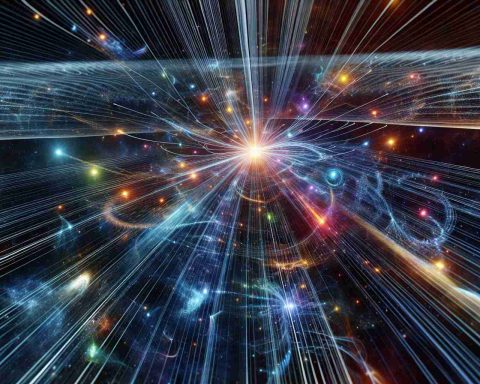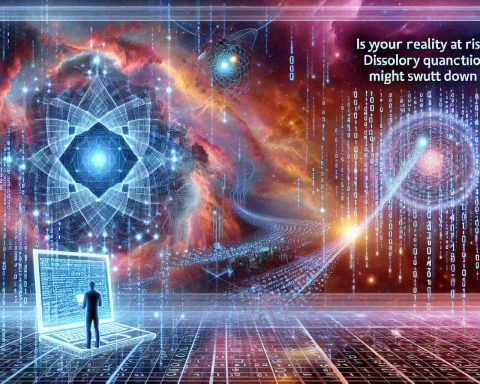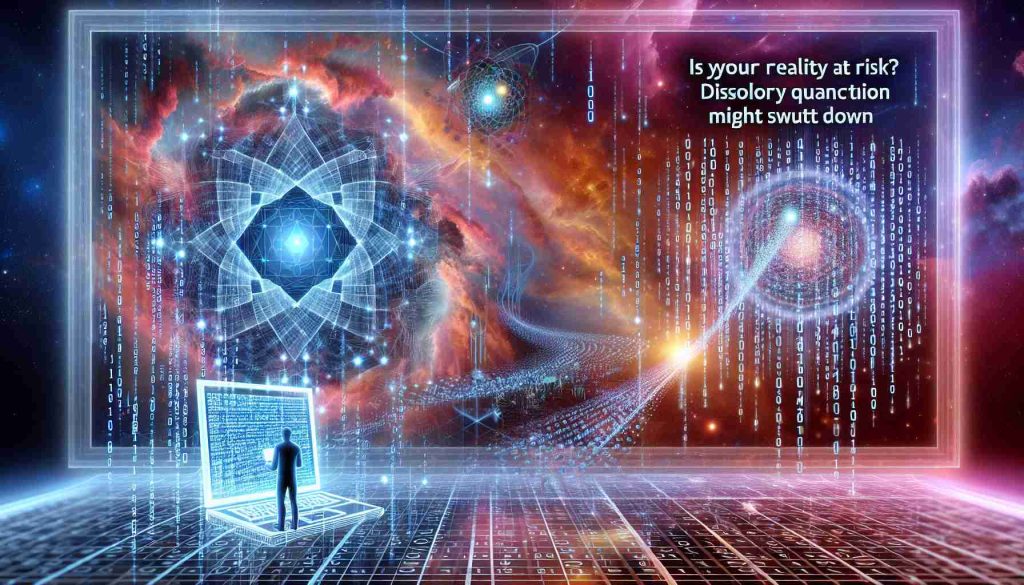- Scientists measured light in 37 dimensions, expanding on the Greenberger-Horne-Zeilinger paradox.
- This study challenges traditional notions of reality and locality in physics.
- Quantum entanglement links events in ways that contradict everyday experiences.
- A sophisticated fiber-based photonic processor was used to explore these complex dimensions.
- The findings suggest that our understanding of reality may be fundamentally flawed.
- Implications of this research could lead to advancements in quantum technology, enhancing circuit efficiency.
- This work invites exploration into the mysteries beyond our three-dimensional experience.
In a groundbreaking experiment that defies human intuition, scientists have ventured into the depths of quantum physics by measuring light in an astonishing 37 dimensions. This mind-bending study, led by experts from the University of Science and Technology of China, focuses on the enigmatic Greenberger-Horne-Zeilinger (GHZ) paradox, challenging everything we think we know about reality.
Imagine checking your mailbox to see if Aunt Judy sent a birthday card. In the world of classical physics, it seems straightforward—if you see it, it’s there. But quantum physics flips that logic on its head! Before you peek inside, the universe remains in a strange state of uncertainty. Until you take a look, it’s as if Aunt Judy’s card could either be there or not, existing in a realm of possibilities. This is where the baffling concept of entanglement comes into play—objects and events can be linked in ways that defy our everyday understanding.
To push this paradox further, researchers used a sophisticated fiber-based photonic processor, akin to redefining the postal service with a complex system of light. By creating a framework that embraced a whopping 37 states representing additional dimensions, they broke down local realism, revealing that expectations about reality might be fundamentally flawed.
As this pioneering study hints at deeper layers of existence beyond our three-dimensional experience, it beckons the question: What else lies beyond our perception? This research not only reshapes our understanding of reality but also paves the way for advancements in quantum technology, potentially leading to faster, more efficient circuits.
The universe might hold mysteries beyond our comprehension, but one thing is clear: our reality is woven from threads of uncertainty, waiting for us to unravel their secrets.
Unlocking the Secrets: How 37 Dimensions of Light Redefine Our Reality!
## Understanding the 37 Dimensions of Light
In a revolutionary study, scientists have ventured into unprecedented territory in quantum physics by successfully measuring light in 37 distinct dimensions. Conducted by researchers at the University of Science and Technology of China, this study probes the complex nature of the Greenberger-Horne-Zeilinger (GHZ) paradox. This exploration not only challenges our existing paradigms regarding reality but also brings quantum technology into sharper focus.
Key Insights from the Study
1. Quantum Entanglement Reimagined: Traditional understandings of quantum entanglement, where particles remain interconnected regardless of the distance between them, are further complicated when multiple dimensions are considered. The researchers’ findings imply that entanglement may behave in even more exotic ways than previously thought.
2. Implications for Quantum Computing: By manipulating light across 37 dimensions, this research suggests potential breakthroughs in the efficiency of quantum circuits. This could accelerate progress toward quantum computers that can perform calculations far beyond the capabilities of classical computers.
3. A New Framework: The concept of local realism, which assumes that objects possess definite properties regardless of observation, is fundamentally challenged by this study. The implications suggest a reconsideration of how we perceive and interact with reality at the quantum level.
Limitations and Controversies
– Complexity of Interpretation: One key limitation of the study is the inherent complexity in interpreting data from 37 dimensions. This multifaceted nature can lead to confusion and miscommunication regarding practical applications in technology and understanding of quantum mechanics.
– Ongoing Debates: The findings may reignite debates among physicists regarding the interpretations of quantum mechanics, particularly surrounding the nature of reality itself and the implications of quantum theories on classical physics.
Future Predictions and Trends
As researchers continue to delve deeper into quantum dimensions, predictions suggest that we could witness rapid advancements in the fields of quantum communication, cryptography, and computing within the next decade. The ongoing exploration of quantum mechanics could unveil more about the universe’s underlying structures and force physicists to rethink established theories.
Questions and Answers
1. What is the GHZ paradox and why is it significant?
– The GHZ paradox is a thought experiment illustrating the counterintuitive peculiarities of quantum mechanics, specifically about entangled particles. Its significance lies in its ability to challenge classical ideas of locality and realism, which helps in deepening our understanding of quantum mechanics.
2. How might these findings affect quantum computing?
– The use of 37 dimensions could lead to advancements in quantum circuit designs, allowing for more intricate algorithms and potentially increasing computational speed. This makes quantum computing a more viable and powerful alternative to traditional computing.
3. What are the broader implications for our understanding of reality?
– The study prompts a re-evaluation of what we consider to be reality, suggesting that our three-dimensional experience is just a fraction of what exists. This could lead to groundbreaking insights in various fields, including physics, philosophy, and information technology.
For more insights on quantum mechanics, visit quantum.edu.
Conclusion
The exploration of light in 37 dimensions not only propels quantum research into new realms but also challenges our fundamental perceptions of reality itself. As we continue to uncover these mysteries, the potential for advancements in technology and our understanding of the universe is limitless.
The source of the article is from the blog aovotice.cz










